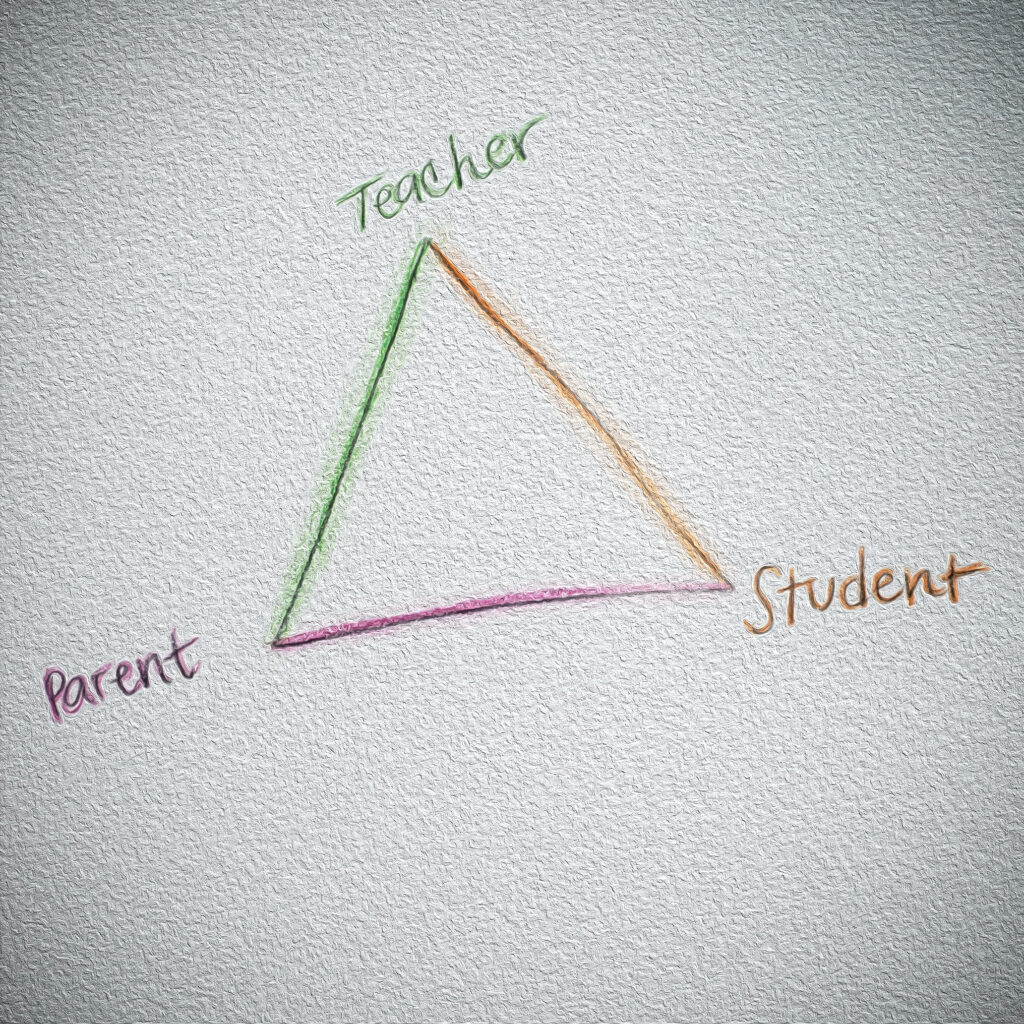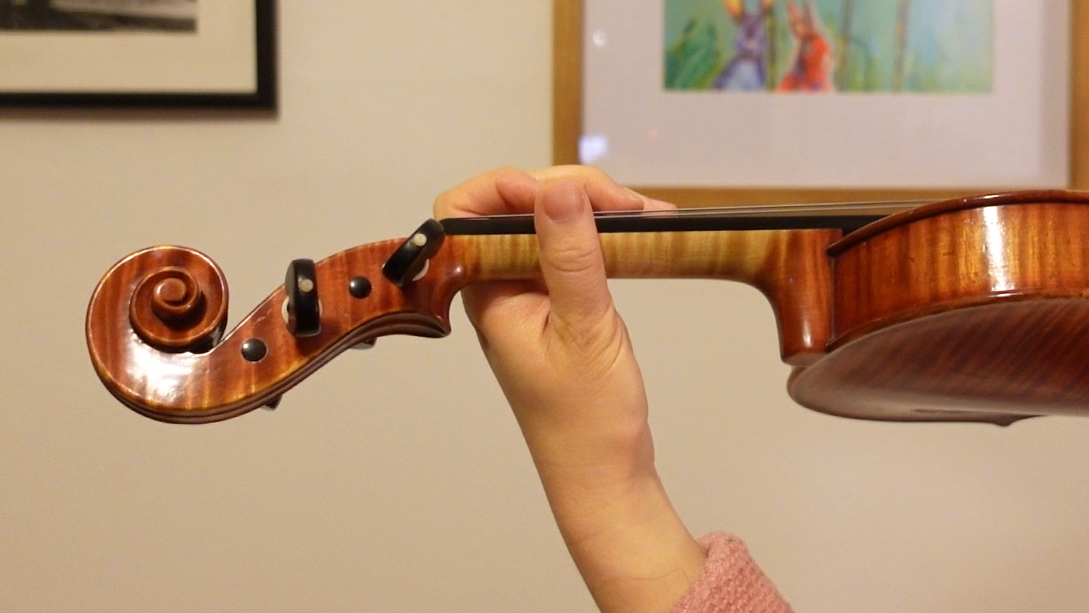If you’re a parent looking for violin lessons for your kids, you may also be wondering how you can help your child get the most out of those lessons.
In the past decade of my career teaching violin lessons for kids, it has been fascinating to observe the way young students develop their skills on the violin at different rates. I follow roughly the same methodical curriculum with each of my violin students. In this way, we cover a set of technical skills and musical ideas with each new piece in the repertoire. Observing students move through this curriculum has shown me that when it comes to violin lessons for children, two students who start violin lessons at the same time will not necessarily be at the same level a year later.
I acknowledge each student’s pace and natural abilities on the violin without judgement. We are all born with inherent strengths and weaknesses. (Some children may be more musically inclined while others prefer sports or robotics or language arts. It goes without saying that those different strengths make the world a better place.) Yet, aside from a child’s inherent amount of musical talent, there is another factor distinguising the children who excel in violin lessons.
The Other Factor
This factor has nothing to do with talent and everything to do with parental involvment in their kids’ violin lessons. Is this surprising at all? The children who come well-prepared to their lessons and learn quickly often have parents who are heavily involved in their musical education. These are the parents who supervise their children’s daily practice routines, sit in on each lesson, and ask me questions. Their involvement also makes me feel supported as a teacher, knowing that my instructions are being implemented at home.
Many of these parents have some musical training of their own, which makes it easier to assist their child’s practice sessions. In some cases, one parent might even have their own violin. However, some parents of children taking violin lessons might not have any musical experience at all. Even so, they are still able to help their child by observing lessons and supervising home practice. The children of these parents often learn with enthusiasm and exhibit a hunger to advance through the repertoire. Consequently, they develop their musical abilities at a more rapid rate than their peers.
Violin Lessons For Children: A Shared Learning Experience
What if a parent has little or no musical experience but still wants to provide their young child with the best musical education? Having a child who is taking lessons could be a great opportunity for a parent to take lessons for themselves. How wonderful it is when a parent and child can bond over a shared experience such as learning a musical instrument together!
A Mother And Her Notebook
Early in my teaching career, I taught violin at a small after-school music program for kids. The school’s owner did not encourage parental involvement. Parents would sit in their car or run errands during the lesson. Students consistently arrived unprepared, often completely forgetting what we had worked on last week despite my practicing instructions. The situation seemed completely ineffective, yet still they came, week after week. I felt like an expensive babysitter, but being a young, inexperienced teacher at the time, I wasn’t entirely sure what the solution could be.
However, there was one young student at that school that stood out from the rest. This student was in first grade when he started lessons with me and over next three years he made wonderful progress. His mother attended each lesson, equipped with a spiral-bound notebook and pencil. She wrote down each assignment and instruction I gave. In my early years of teaching, this made an impression of me. It showed me the effectiveness of parental involvement in a child’s musical education.
The Suzuki Triangle
A few years later I registered for Suzuki Violin Teacher Training and ended up becoming a registered Suzuki Teacher in Books 1-5. One of the biggest tenets of the Suzuki Method is the importance of parental involvement in a child’s music education. This drastically changed my view of violin pedagogy and I realized that this important factor had been missing at the program where I used to teach. I soon began teaching using this approach. I requested that parents attend their children’s lessons and be more involved in the learning process. My new students yielded much better results.
Suzuki Method teachers often speak of the “Suzuki Triangle.” This symbol represents how the student, teacher, and parent all play equal roles in helping a student reach his or her full potential on their instrument. As the violin teacher, my time with each of my students lasts only 30-60 minutes per week. Therefore, in order to make significant progress, the student has to practice well in the time between lessons. However, a young child cannot be expected to be self-sufficient when it comes to practicing; they need the help of an adult. One or both parents, then, essentially becomes the “home teacher” for their child. The home-teacher supervises practicing and making sure the child follows the instructions given by the main teacher.

Violin Lessons As A Father-Son Activity
One of my students who started lessons with me at the age of four benefits greatly from having a parent who plays violin with him at home. When this child was ready to graduate from his cardboard violin to a “real” violin, I sent the family to the local violin shop to pick up a rental. To my amusement, the father decided to rent a full-size violin for himself as well that day. Ever since then, he has practiced at home with his son. They have playful competitions with each other to see who can practice a piece more times per week. This motivates the student to practice and out-do his dad.
About a year later, this student’s younger sister was ready to start taking lessons with me as well. She learned quickly and enthusiastically, as she had the advantage of living in a household with two other violinists. Both siblings are learning violin at a rate much quicker than their peers. They play with great musicality and vigor, and I attribute this mainly to the involvment of their father in their practice sessions.
Violin Lessons For Parents
I gave a consultation the other day to a prospective adult student who wanted to learn the violin so that she could help her children with their musical studies. I found this to be a wonderful reason for wanting to learn the violin! When both parent and child are learning at the same time, practice sessions become a shared experience and the parent is better equipped to play the role of the home teacher.
Nonetheless, planning in-person lessons with the same teacher as your child can be difficult due to scheduling reasons. There are also some teachers who prefer to work only with children. I hope to offer a solution to these problems by offering online lessons to adult students. No travel time is required for online lessons, and they can be scheduled during the day when children are at school. As an SAA-registered instructor, I have extensive experience offering violin lessons for kids as well as adults. I enjoy guiding adult students through the repertoire that their children may be learning as well as offering tips for how to be a better home-teacher.
Ultimately, if you are supporting your child in their music lessons, you are already doing a great job as a parent. That being said, if you are interested in taking violin lessons for yourself, feel free to reach out with any questions. It’s my pleasure to help you bring more harmony to your family’s musical experience.
How To Do a 180° Career Change As A Classical Musician
As a musician, I’ve had moments of wondering what life would be like to go through a career change. …
What It’s Like To Fulfill Your Parents’ Musical Dreams
With discipline, talent, and passion for orchestral music, 32-year-old cellist Sonia Mantell has alr…
How To Treat Violin-Related Pain and Injuries With Sotai
For violinists who have struggled with playing-related pain despite trying countless remedies, a Jap…
How To Build A Nationally-Recognized Non-Profit Music Ensemble
Starting a non-profit music ensemble is a dream shared by many musicians, but turning that dream int…
How Friendships and Passion Shape A Meaningful Life In Music
Have you ever reflected on the values that guide your career as a musician? Pianist, harpsichordist,…
How To Overcome Left-hand Pain While Playing Violin
Left-hand and arm pain while playing violin is a common challenge for students. As a violin teacher,…






Pingback: Top 5 Books To Educate and Empower Suzuki Parents - Kiyoe Matsuura Violin
Should parents be required to take a basic music education course in order to effectively support their child’s progress in violin lessons?”,
“refusal